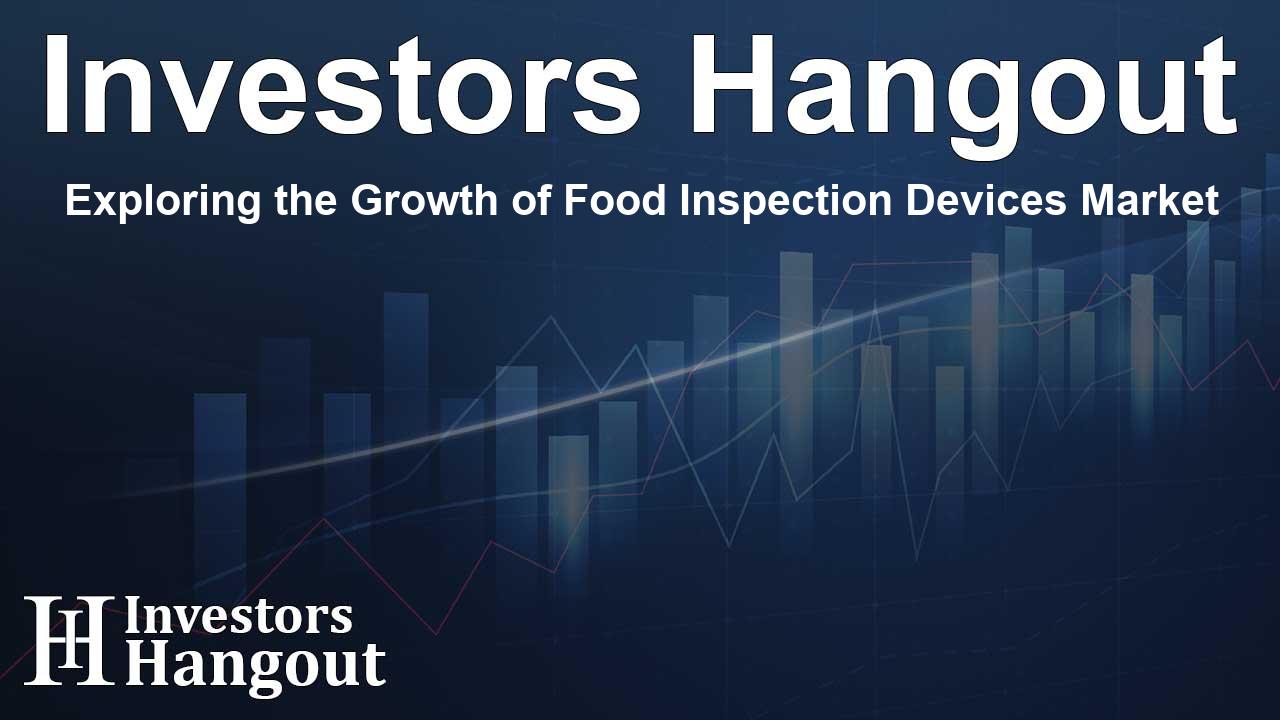Exploring the Growth of Food Inspection Devices Market

Growth Potential of the Food Inspection Devices Market
The food inspection devices market is on a trajectory towards significant growth, with expectations to reach a value of $5.08 billion by 2030, soaring from $3.25 billion in just five years. This promising increase reflects a compound annual growth rate (CAGR) of 9.3% from now until 2030. Key catalysts propelling this expansion include heightened global food safety concerns, a sharp rise in the demand for processed and packaged foods, as well as stringent regulatory frameworks that necessitate mandatory inspection practices across the food manufacturing spectrum.
Drivers Behind Market Expansion
As food safety regulations become increasingly stringent, manufacturers are compelled to invest in advanced food inspection technologies. Such technologies are vital to ensure compliance, detect contaminants accurately, and maintain consumer trust. Innovations in the field have seamlessly integrated rapid diagnostic techniques, particularly in spectroscopy, which is leading this market segment. The growth of portable and sophisticated inspection devices is altering the landscape, empowering manufacturers to transition their quality assurance practices to meet emerging consumer demands and regulatory obligations.
Technological Advancements in Food Safety
The sophistication of food inspection devices has evolved, with spectroscopy receiving notable attention. As food safety testing demands rise, methods that are rapid, non-destructive, and highly accurate are increasingly sought after. Spectroscopy employs technologies like near-infrared (NIR) and Raman, enabling precise detection of contaminants and ensuring compliance with labeling. This shift is particularly relevant in high-value segments such as dairy, meats, and beverages, where quality assurance is non-negotiable.
Market Segmentations and Insights
By product, the spectroscopy devices segment is anticipated to outpace others in growth throughout the forecast period. This is primarily due to their non-invasive nature and the ability to deliver multiple quality metrics swiftly, establishing them as indispensable tools for contemporary food safety operations. With growing regulatory pressures, the appeal of these technologies is amplified in key markets, thereby enhancing their uptake.
The Role of Food Manufacturers and Processors
Focusing on market verticals, food manufacturers and processors are positioned to hold the largest market share this decade. This dominance stems from their need to safeguard product quality, comply with regulations, and protect their brand reputation. Manufacturers are increasingly integrating cutting-edge technologies such as X-ray systems, metal detectors, and checkweighers, which streamline operational efficiency while enhancing safety protocols.
Geographic Trends in Food Inspection Devices
Regionally, North America is poised to hold the second-largest market share, supported by rigorous food safety regulations and a robust processing infrastructure. The Food Safety Modernization Act, alongside other regulatory frameworks worldwide, mandates compliance that drives manufacturers to adopt reliable inspection technologies. The ongoing focus on automation and smart technology integration remains a vital aspect of operational strategies, enhancing product safety.
Challenges and Opportunities in the Market
Such rapid growth does not come without challenges, which include the complexities of standardizing inspection processes across diverse food products. However, there are significant opportunities as businesses pivot toward advanced contamination detection methods. The demand for allergen-free and clean-label products is amplifying. Manufacturers are encouraged to adopt intelligent inspection systems capable of identifying even minute contaminants, thus meeting the growing expectations of today's consumers.
Conclusion: Future of Food Inspection Technologies
This burgeoning market landscape is also witnessing leading players aggressively innovating and launching advanced technologies in their product lines. The importance of food safety can't be overstated, and as regulatory standards evolve, so too must the technologies that support these frameworks. The advancements in food inspection devices are crucial for ensuring that products are not just safe but also meet consumer expectations for quality and transparency.
Frequently Asked Questions
What is the expected market value of food inspection devices by 2030?
The food inspection devices market is projected to reach $5.08 billion by 2030.
What factors are driving the growth of this market?
Key drivers include rising food safety concerns, increased demand for processed foods, and regulatory pressure on inspection practices.
Which technology is leading in food inspection devices?
Spectroscopy technologies are among the leading methods due to their rapid and accurate detection capabilities.
How are food manufacturers adapting to new market demands?
They are increasingly integrating advanced technologies such as AI and IoT systems to enhance operational efficiency and assure quality.
What challenges does the food inspection devices market face?
Challenges include the need for standardization across various food products and maintaining compliance with evolving regulatory requirements.
About The Author
Contact Thomas Cooper privately here. Or send an email with ATTN: Thomas Cooper as the subject to contact@investorshangout.com.
About Investors Hangout
Investors Hangout is a leading online stock forum for financial discussion and learning, offering a wide range of free tools and resources. It draws in traders of all levels, who exchange market knowledge, investigate trading tactics, and keep an eye on industry developments in real time. Featuring financial articles, stock message boards, quotes, charts, company profiles, and live news updates. Through cooperative learning and a wealth of informational resources, it helps users from novices creating their first portfolios to experts honing their techniques. Join Investors Hangout today: https://investorshangout.com/
The content of this article is based on factual, publicly available information and does not represent legal, financial, or investment advice. Investors Hangout does not offer financial advice, and the author is not a licensed financial advisor. Consult a qualified advisor before making any financial or investment decisions based on this article. This article should not be considered advice to purchase, sell, or hold any securities or other investments. If any of the material provided here is inaccurate, please contact us for corrections.
